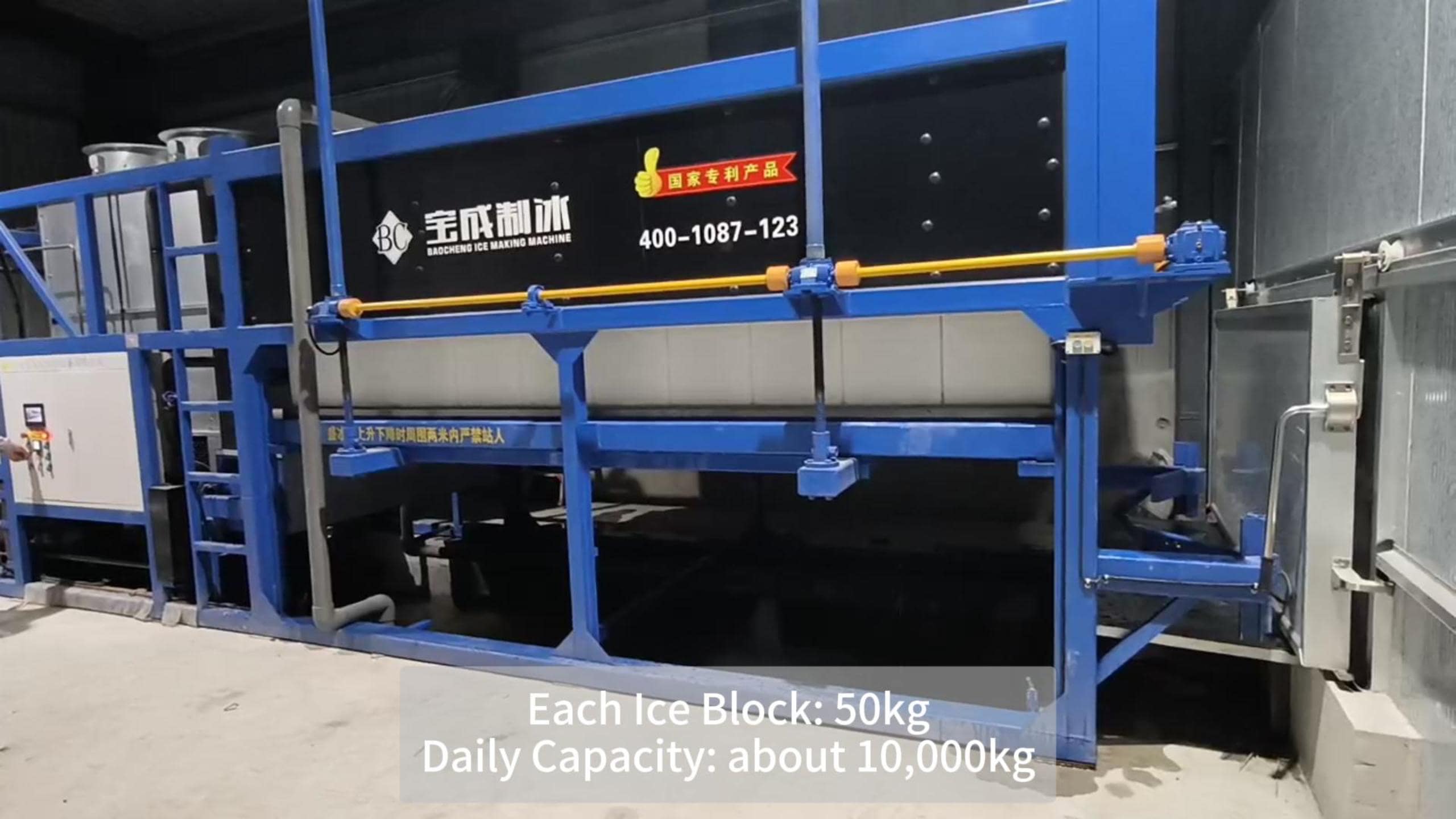Selecting the Right Cooling System for Block Ice Making Machines: A Comprehensive Guide
Sep 25, 2024
The configuration of the cooling system in a block ice making machine is crucial for efficient performance. Selecting the right cooling system depends on production capacity, environmental conditions, and other key factors. This article will explore the different types of cooling systems used in direct cooling ice machines, their working principles, advantages, and considerations for choosing the optimal system to meet specific operational needs.
Introduction
Cooling systems are an essential component of any block ice making machine, playing a critical role in maintaining operational efficiency and ensuring that the ice production process runs smoothly. At BAOCHARM, we understand that the choice of a cooling system can significantly impact the overall performance of an ice machine, including energy consumption, production speed, and maintenance costs.
In this article, we will discuss the types of cooling systems commonly used in industrial ice machines, including air-cooled, water-cooled, and evaporative-cooled systems. By examining their working principles, pros and cons, and how each system fits into different production scenarios, we aim to provide valuable insights for businesses looking to optimize their ice production.
Types of Cooling Systems for Block Ice Making Machines
When it comes to block ice making machines, three primary types of cooling systems are commonly used: air-cooled systems, water-cooled systems, and evaporative-cooled systems. Each of these cooling methods offers unique benefits, and their suitability depends on factors such as production scale, environmental conditions, and space availability.
1. Air-Cooled System
An air-cooled system uses air to dissipate the heat generated during the ice-making process. Fans are used to blow air across the condenser, allowing heat to escape into the surrounding environment.
Advantages:
Simple installation: Air-cooled systems are easy to set up, requiring no additional plumbing or water supply.
Low operating costs: Since it relies solely on air circulation, it does not require a water supply, reducing utility costs.
Ideal for small-scale operations: Air-cooled systems work well for smaller block ice machines and commercial setups where space is limited.
Disadvantages:
Less efficient in high temperatures: In hot environments, air-cooled systems may struggle to maintain optimal cooling, leading to reduced efficiency.
Noise: The fans in air-cooled systems can be noisy, which may be a consideration for some installations.
2. Water-Cooled System
A water-cooled system uses water to remove the heat from the refrigerant during the ice-making process. The water absorbs the heat and is then discharged or recirculated through a cooling tower.
Advantages:
Efficient in high-heat environments: Water-cooled systems maintain consistent performance even in hot climates, making them suitable for larger production facilities.
Quiet operation: These systems are quieter than air-cooled systems due to the absence of large fans.
Disadvantages:
Higher water consumption: The system requires a continuous water supply, which can increase operational costs.
More complex installation: Setting up a water-cooled system involves additional plumbing and may require a cooling tower, which can complicate installation and maintenance.
3. Evaporative-Cooled System
An evaporative cooling system combines the principles of both air and water cooling. It cools the refrigerant by using a water-soaked pad or coil, with air flowing over the surface, causing the water to evaporate and absorb the heat.
Advantages:
Highly efficient: Evaporative cooling systems offer higher energy efficiency compared to air- and water-cooled systems.
Reduced water usage: These systems use less water than water-cooled systems because the water is recirculated in a closed loop.
Optimal for large-scale production: This system is ideal for large-capacity block ice machines where maximum cooling is essential.
Disadvantages:
Complex setup: Evaporative cooling systems require more sophisticated infrastructure, including water recirculation systems, which can increase installation costs.
Maintenance: These systems require regular maintenance to prevent scale build-up and ensure consistent operation.
Why Cooling Systems are Essential for Ice Machines
The primary function of cooling systems in ice cooling machines is to regulate the temperature of the refrigerant, which is critical for efficient ice production. Without a properly functioning cooling system, the block ice making machine would overheat, leading to reduced productivity, increased energy consumption, and potential equipment failure.
Choosing the right cooling system ensures:
Optimal production efficiency: Proper cooling allows the machine to produce ice at a faster rate.
Reduced energy consumption: Efficient cooling minimizes the amount of energy required to maintain low temperatures.
Longer machine lifespan: Consistent cooling prevents overheating, reducing wear and tear on the machine.
BAOCHARM’s Integrated Cooling Solutions
Our block ice making machines are designed with fully integrated cooling systems, ensuring that our customers receive a complete, ready-to-use solution. This integration simplifies the installation process, allowing clients to quickly start production after basic setup.
For smaller production needs, such as the BCPY-0.25T-1T and BCPY-0.5T-2T models, we offer air-cooled units. For larger operations, such as the BCPY-0.75T-3T and BCPY-1.25T-5T models, we provide water-cooled systems.
In the international market, where shipping constraints are a concern, we often recommend water-cooled systems due to their compact size, which makes them easier to transport. Although evaporative-cooled systems are popular domestically due to their efficiency, their larger size can exceed shipping container limits, making water-cooled systems a more practical option for overseas clients.
Factors to Consider When Choosing a Cooling System
When advising customers on the best cooling system for their needs, BAOCHARM takes several factors into account:
Production capacity: Larger production volumes require more efficient cooling systems, such as water- or evaporative-cooled options.
Environmental conditions: For hot climates, water-cooled or evaporative systems may be more effective, while air-cooled systems are better suited for cooler environments.
Water availability: If access to water is limited or expensive, an air-cooled system may be more practical.
Space constraints: Some systems, such as evaporative coolers, require more space, so we assess the available area before making recommendations.
Conclusion
Cooling systems are a vital component of any block ice making machine, directly influencing the machine's efficiency, energy consumption, and overall performance. By understanding the differences between air-cooled, water-cooled, and evaporative-cooled systems, businesses can make informed decisions about which system best meets their operational needs.
At BAOCHARM, we work closely with our clients to tailor solutions based on their production requirements, environmental conditions, and logistical needs. Contact us today to learn more about how our integrated cooling systems can help optimize your ice production and maximize your economic returns.
Read More


